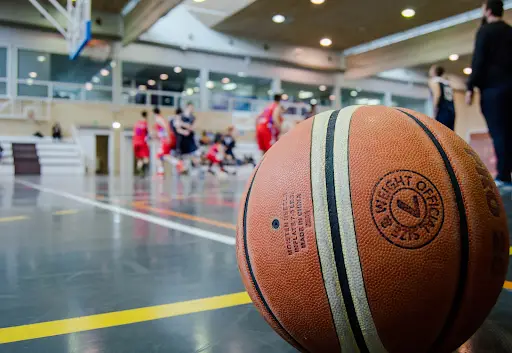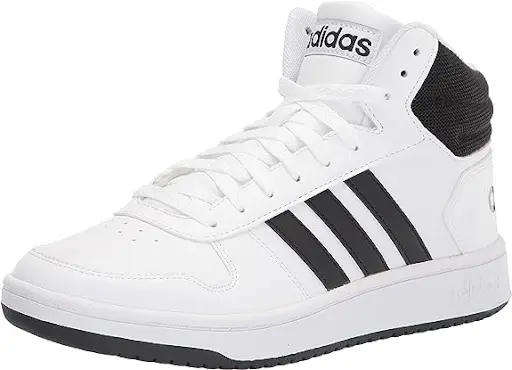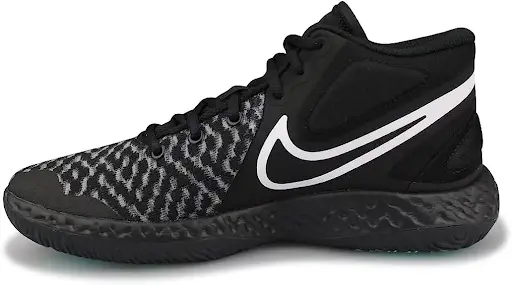Last Updated April 22, 2024 Last Updated February 22, 2024 by Brian Aquino
In the fast-paced basketball world, where agility, strategy, and teamwork reign supreme, the screen is one of the most fundamental yet often underappreciated tactics. Suppose you’re new to the game or simply looking to deepen your understanding.
In that case, unravel the nuances of screens in basketball, helping you not only grasp the concept but also gain a strategic edge on the court.
Table of Content
What is the screen in basketball used for?
A screen in basketball is a tactical maneuver employed by an offensive player to free up a teammate, usually the ball handler, from their defender. This maneuver involves a player, known as the screener, positioning themselves in the defender’s path guarding the teammate who needs to get open. By doing so, the screener creates a physical barrier, known as the screen, that impedes the defender’s progress and allows the ball handler to move more freely.
The Purpose of Screens
-
Creating Scoring Opportunities
Screens are primarily used to create scoring opportunities for the offensive team. When a player sets a well-executed screen, it forces the defender to navigate around it, giving the ball handler precious seconds of separation to take a shot, drive to the basket, or make a critical pass.
-
Freeing Up Shooters
Screens are especially valuable when it comes to freeing up three-point shooters. The separation created by a screen can give a shooter the space they need to take an uncontested shot from beyond the arc.
-
Confusing the Defense
Screens can be part of complex offensive plays that involve multiple screens, cuts, and passes. These movements can bewilder the defense, leading to breakdowns in coverage and open opportunities for the offense.
What’s the difference between a screen and a pick?
While the terms “screen” and “pick” are often used interchangeably, there is a subtle difference between the two:
The Screen
- Screening Involves Contact: A screen typically involves physical contact between the screener and the defender. The screener sets their body in the defender’s path, using their size and strength to create separation.
- Used for Various Purposes: Screens are versatile and can create scoring opportunities, free up shooters, or simply confuse the defense.
The Pick
- Pick is Non-Contact: A pick, on the other hand, is a non-contact maneuver. It refers to a player positioning themselves in the path of a defender without making physical contact. Instead, the player relies on their positioning and timing to create separation.
- Primarily Used for Scoring: Picks are most commonly used to free up a shooter for a scoring opportunity, especially when contact might result in a foul.
In essence, all picks are screens, but not all screens are picks. The choice between the two depends on the specific strategy and the level of physicality desired in a play.
What’s an illegal screen in basketball?
While screens are essential to basketball strategy, not all screens are legal. Understanding what constitutes an illegal screen is crucial to avoid turnovers and foul calls. Here are some key points to consider:
Moving Screens
- Illegal Movement: A screen becomes illegal if the player setting the screen moves while contact is made with the defender. This is commonly called a “moving screen” and results in a foul.
Excessive Contact
- Excessive Physicality: Excessive pushing, grabbing, or leaning into the defender during a screen is also considered illegal. Screens should be set without excessive force.
Screen Position
- Screen Angle: The angle of the screen matters. If a screen is set at an angle that causes the defender to trip or fall, it will be deemed illegal.
Off-Ball Screens
- Off-Ball Screens: Even screens away from the ball can be illegal. If they impede the defender’s ability to guard their assigned player, it’s a foul.
You can also check out this video for more tips on screens!
What kind of screens are there in basketball?
Basketball is dynamic; screens come in various forms to suit different situations and offensive strategies. Here are some common types of screens:
1. On-Ball Screens
- Pick and Roll: Perhaps the most famous screen in basketball, the pick and roll involves the ball handler using the screen to drive towards the basket while the screener rolls towards the hoop, creating multiple scoring options.
2. Off-Ball Screens
- Down Screen: In this screen, a player moves down the court and sets a screen for a teammate coming from the top of the key. It’s often used to free up shooters.
- Back Screen: A back screen occurs when a player sets a screen for a teammate behind the defense. It’s a sneaky way to get a player open near the basket.
3. Cross Screen
- Cross-Screen: This screen is used when a player wants to create a post-up position for a teammate. It involves crossing the court to set a screen on the opposite side.
4. Flare Screen
- Flare Screen: In this screen, a player moves away from the ball and then suddenly sets a screen to free up a shooter on the perimeter.
5. Double Screens
- Double Screens: Two players set screens simultaneously to free up a teammate. It can be a highly effective way to create open shots.
Best Basketball Shoes for Traction: Enhancing Your Game with Every Screen
When it comes to playing basketball, having the right gear is crucial. Among the essential equipment, a pair of high-quality basketball shoes can significantly impact your performance on the court. In this review, we will take a closer look at three top-notch basketball shoe options, examining their traction capabilities and how they relate to the effectiveness of screens in basketball.
1. CROSSOVER CULTURE Men’s Basketball Shoes: Best in Stylish Performance
Key Features:
- Designed for Performance and Style: CROSSOVER CULTURE basketball shoes are designed for on-court performance and exude style. With a fresh color palette, camo-inspired print on the heel and collar, and full-grain leather accents, these shoes will make you stand out.
- Extra Bounce: Featuring a midsole cushioned with Twitch Foam, these shoes provide optimal energy return, giving you that extra bounce needed for explosive plays and effective screens.
- Stability and Support: The foam-padded molded collar ensures comfort, while fused support bands on the lateral outside and medial inside offer stability. Dual TPU shanks between the insole and outsole increase support and stability, which is vital for setting solid screens.
- Sticky Traction: The high-friction wavybone rubber outsole delivers exceptional grip and traction on the court, making it easier to set screens and move dynamically.
Pros:
- Stylish design for both on and off the court.
- Twitch Foam midsole provides excellent energy return.
- Stable and supportive construction.
- High-friction wavybone outsole offers superior traction.
Cons:
- Limited customer ratings are available.
2. adidas Men’s Hoops 2.0 Mid Basketball Shoe: Superior in Comfort and Fit
Key Features:
- Comfortable Fit: adidas Hoops 2.0 Mid Basketball Shoes come with a soft fabric sockliner, textile lining, and a mesh collar for breathability, ensuring a comfortable fit during intense gameplay.
- Durable Construction: The synthetic leather upper provides durability and a smooth feel, ideal for indoor and outdoor play.
- Secure Lace Closure: These shoes feature a lace closure for a custom fit, preventing any slippage during screens and cuts.
- Reliable Traction: The rubber outsole offers durable traction, allowing for confident movements and screens.
Pros:
- Highly rated for comfort and fit.
- Durable construction is suitable for various court types.
- Lace closure ensures a secure fit.
- Solid rubber outsole provides reliable traction.
Cons:
- Limited color options.
3. Nike Men’s Kd Trey 5 VIII Basketball Shoes: Most Trusted in Ankle Support and Traction
Key Features:
- Ankle Support: The mid-top design with perforated foam pods helps lock in your ankle, offering stability crucial for setting screens.
- Breathable Tongue: The padded, breathable tongue with raw-edge detail enhances comfort during gameplay.
- Dynamic Look: The two-layer textile material in the forefoot includes clear yarns that give it a dynamic look, ensuring you look good while dominating the court.
- Superior Traction: The rubber outsole with a wavy tread pattern provides durable, multidirectional traction, facilitating quick stops and starts essential for screen positioning.
Pros:
- Excellent ankle support.
- Breathable design for added comfort.
- Unique dynamic look.
- Outstanding multidirectional traction.
Cons:
- Higher price point.
Key Takeaway
Screens in basketball are not just physical barriers but strategic tools that can tip the balance of a game. By understanding the nuances of screens, you can enhance your gameplay, create scoring opportunities, and outmaneuver your opponents.
Choosing the right basketball shoes can significantly impact your performance on the court, especially when executing screens effectively. While each option has its strengths, all these shoes stand out for their stylish design, energy-returning midsole, and exceptional traction. So, gear up with the best to enhance your game and make those screens count.
- How To Make Basketball Shoes More Grippy? - October 12, 2023
- How to Become a Basketball Referee? - October 11, 2023
- Unlocking Basketball Success: The Art of Effective Coaching Strategies - October 10, 2023






